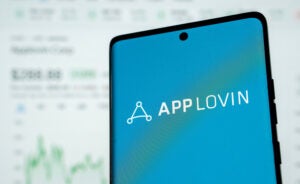 Once measurement is fully in place, experts predict demand for mobile programmatic video and connected TV apps to reach a tipping point. Some programmatic platforms, such as mobile DSP Adelphic, are already seeing the shift.
Once measurement is fully in place, experts predict demand for mobile programmatic video and connected TV apps to reach a tipping point. Some programmatic platforms, such as mobile DSP Adelphic, are already seeing the shift.
Mobile video accounts for 7.3% of all Adelphic campaigns, representing 18.2% of total spend through its platform. Sixty percent of its mobile video impressions are in-app vs. mobile web.
Adelphic revealed on Monday it is enabling access to LiveRail’s connected TV inventory, representing 100 million monthly impressions across smart TV systems like Roku and publisher apps like A+E Networks. It expects that number to grow in Q3 and Q4.
Adelphic buys mobile video from most major exchanges, including BrightRoll, SpotXchange, MoPub and more. But it had a mobile integration with LiveRail before the video ad platform was acquired by Facebook, said Adelphic CEO Michael Collins.
Publishers want to find audiences on over-the-top devices and drive incremental reach, said Troels Smit, head of demand sales for LiveRail, but this is challenging.
“Each OTT platform is built on native technology, so there are no ‘standards’ across different platforms,” Smit said. “Everything from the delivery mechanism to the way you identify individual households is different. That’s why buyers and publishers are excited about a marketplace … creating a scalable offering.”
Still, the connected TV ecosystem falls short of a “scaled offering” at this point. There are measurement limitations and no common identifier that works across platforms.
“The bad news is we’re no closer to a common identifier for individuals across devices, and the question remains how effectively we can assess TV’s impact on channels further down the purchase funnel,” said Tim Dunn, director of strategy at Isobar US. For instance, marketers want to determine which TV ads prompted individual audience members to search for their product.
Certainly OTT device manufacturers are offering identifiers – Roku recently rolled out a resettable ad ID. But Collins noted individual identifiers should account for viewership beyond their own environments.
“We’re seeing a further splintering of measurement with Roku’s analytics not (or not yet) including audiences for Amazon, Hulu, etc., who watch through the app,” added Dunn. “While these can technically be added into aggregate measurement without huge difficulty, the pairing of different IDs to identify users is a challenge.”
Buyers want the ability to identify the same user across Google and Facebook, which encourages liquidity in the market, Collins said.
“As a publisher, I understand it’s their job to protect the integrity of their audiences but brands need to argue for their side, which is to have as much efficiency for their ad spend as possible,” said Collins.
“For true audience buying, one more player with a proprietary ID can be limiting because you want to match a user with the other devices they’re on, and run true cross-channel campaigns.”
David Morris, chief revenue officer for CBS Interactive, acknowledged during Videonuze’s OnlineVideo Advertising Summit Tuesday that while measurement still lags, the publisher is testing a demo-based measurement with one over-the-top partner. He expects Nielsen’s Digital Ad Ratings to incorporate deeper measurement for connected TV apps in the second half of the year.














